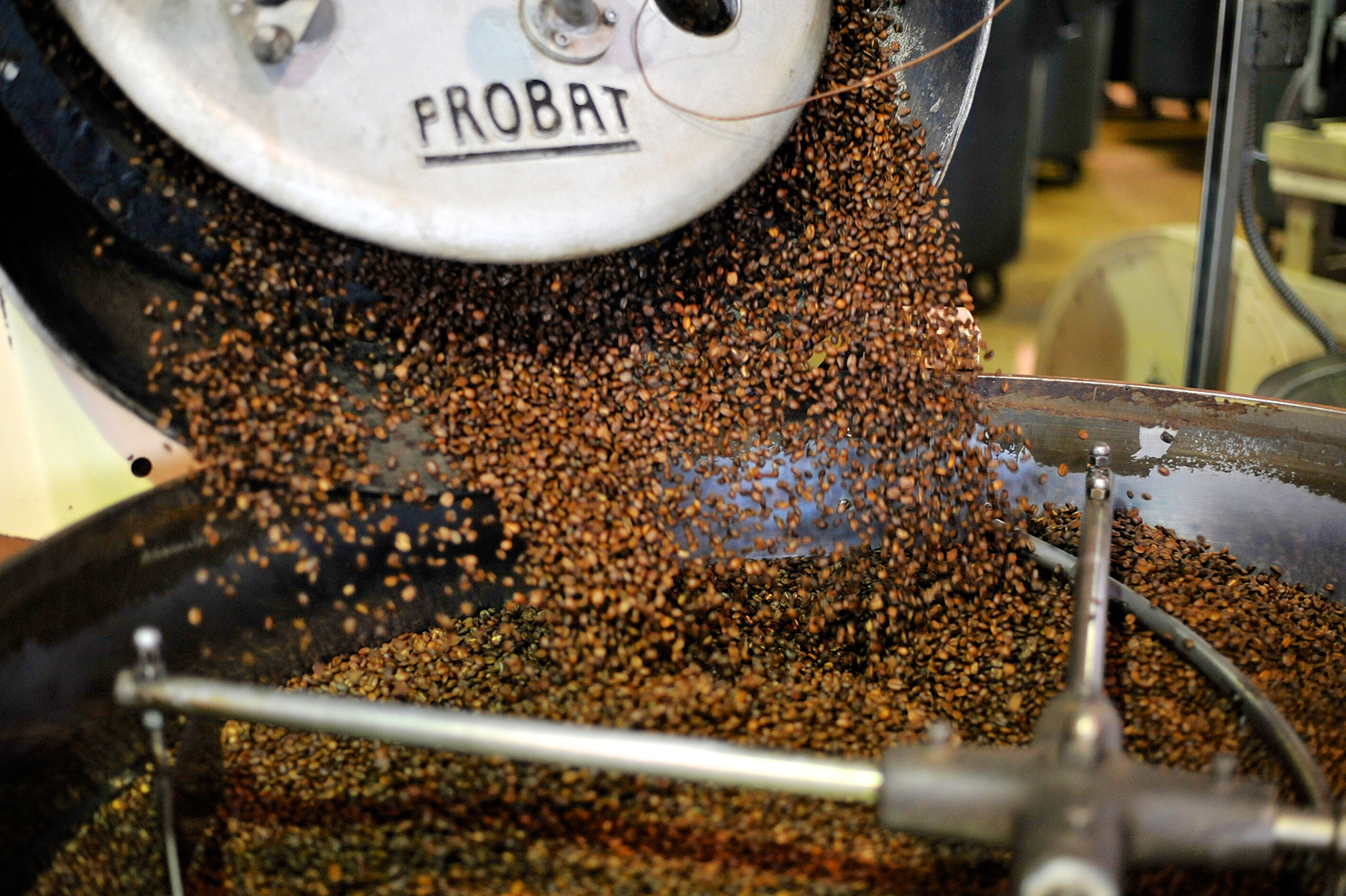Shopping Bag
0
- No products in the cart.

Roasting is one of the most fascinating aspects of the coffee industry. It takes the green coffee seed, which has almost no flavour beyond a quite unpleasant vegetal taste, and transforms it into an incredibly aromatic, astonishingly complex coffee bean. The smell of freshly roasted coffee is evocative, intoxicating and all-round delicious. This section deals with roasting on a commercial scale; see information about home roasting .
A huge amount of research has gone into the commercial roasting of relatively low-quality coffee, most of it to do with the efficiency of the process and the methods used in producing instant soluble coffee. As these coffees aren’t particularly interesting or flavoursome, very little work has been done on the development of sweetness, or the retention of flavours unique to a particular coffee’s terroir or variety.
Speciality roasters around the world are, by and large, self trained and many have learned their trade through careful trial and error. Each roasting company has its own style and aesthetic, or roast philosophy. They may well understand how to replicate what they enjoy drinking, but they do not sufficiently understand the whole process to manipulate it to produce a variety of different roast styles. That is not to say that delicious and well-roasted coffee is rare: it can be found in almost every country in the world. If anything, it suggests that the future is bright for quality coffee roasting, as there is still a lot to explore and develop that can only lead to better roasting techniques.
FAST OR SLOW, LIGHT OR DARK?
To simplify matters, it can be said that the roast of a coffee is a product of the final colour of the coffee bean (light or dark), and the time it took to get to that colour (fast or slow). To simply describe a coffee as a light roast is not enough, as the roast could have been relatively fast or it could have been quite slow.
The flavour evaporation of moisture. Slow roasting (14–20 minutes) will result in a greater loss of weight (about 16–18 per cent) than faster roasting, which can be achieved in as little as ninety seconds. Slow roasting will also achieve a better, if more expensive cup of coffee. The roasting process can be controlled to determine three key aspects of how the coffee will taste: acidity, sweetness and bitterness.
It is generally agreed that the longer a coffee is roasted, the less acidity it will have in the end. Conversely, bitterness will slowly increase the longer a coffee is roasted, and will definitely increase the darker a coffee is roasted. Sweetness is presented as a bell curve, peaking in between the highs of acidity and bitterness.
A good roaster can manipulate where a coffee may be sweetest in relation to its roast degree, producing either a very sweet, yet also quite acidic coffee, or a very sweet, but more muted cup by using a different roast profile. However, adjusting a roast profile can never improve a poor-quality coffee.
Free Shipping On All Orders $200+ |
